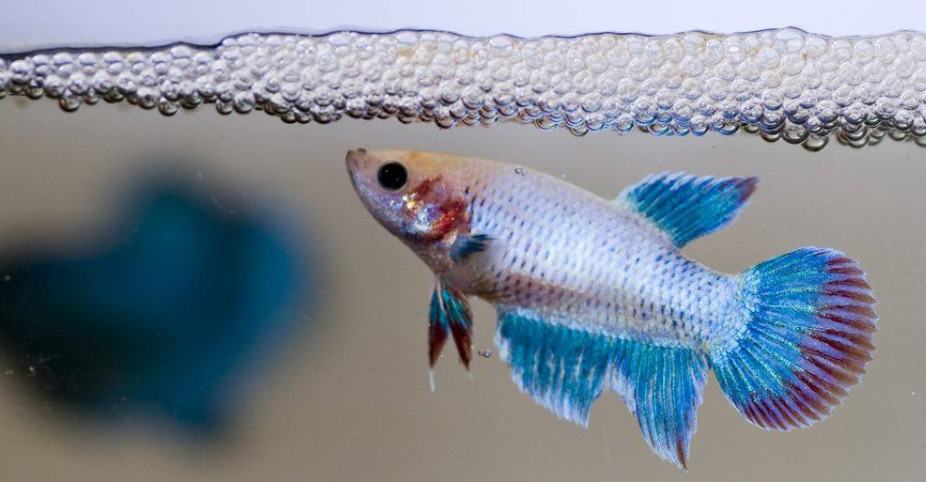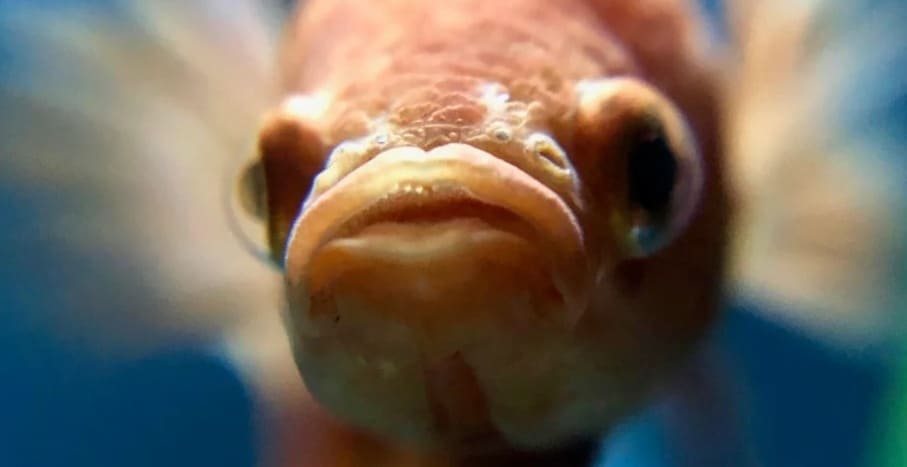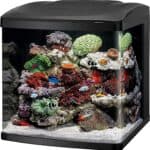Betta fish are one of the most popular types of freshwater aquarium fish. If you’re looking for a new pet, then they may be the perfect choice for you.
In this blog post, we talk about betta fish bubble nests! I will answer what bubble nests are, why your fish is blowing bubbles, and how you can help your betta make a better bubble nest.
What are Betta Bubble Nests?
Bubble nests are made of bubbles that are blown by the male betta fish to attract a mate or defend their territory. The size and shape of the bubble nest will vary depending on how aggressive the male is feeling and how deep or tall the fish tank is.
Betta fish blow bubbles during the first stage of reproduction. This is called the bubble nest building stage. Male betta fish blow bubbles to attract a mate and provide a place for the female to place their eggs in the bubble nest.
So if you own a male betta, you may see your fish blowing bubbles on the surface of your tank. This is natural and means that he’s getting ready to reproduce. Your male betta will do this regardless of whether there is a female or not.
These bubbles help to protect the eggs from being eaten by predators and keep them oxygenated. The male will guard the nest and fry until they are able to swim on their own.

How Is a Betta Bubble Nest Made?
Male betta fish will gather air from above the water surface, through their mouth and gills. This is called “ram ventilation.” The collected air is then mixed with mucus on his labyrinth organ in order to make bubbles! These bubbles are then blown onto the surface of your betta fish tank.
With time, the bubbles will group together and form a floating nest. This will group together until it’s large enough to support the eggs.
What Does a Bubble Nest Look Like?
The bubble nests that are made by male betta fish tend to look like round balls of fluffy donuts. Bubble nest sizes can range from small, tight ones to large, loose ones with multiple layers of bubbles!
These bubble nests can get so large that they can take up a lot of space in your betta fish tank. If you have a large male betta, it’s likely that he will make an even larger bubble nest!
Should I Remove Betta Bubble Nest?
It’s best not to disturb your fish during this time as they are very protective of their nests! Instead, wait until after spawning has finished and he has abandoned his nest before moving it. If you’re unhappy with its position in your tank, you can gently move it to another spot. I wouldn’t recommend breaking it up as this could harm the eggs.
How to Help My Betta Build a Bubble Nest?
If your betta fish is having trouble building a bubble nest, you can try to help him out! There are a few things that you can do to make sure he has everything he needs to build a perfect one:
Provide him with a tall tank – Betta fish like to build their nests on the surface of your aquarium and need enough space to do this. Tall tanks tend to be better than wide ones as there is more vertical room for them to work with
Make sure he has access to air at the top of his tank – There should be a gap for your betta to swim up to the surface and gather air. If there isn’t enough space, you can create an airstone or bubble wand to help him out.
Make sure the water is warm – Betta fish like warm water, so keep your tank at a temperature of around 78-80 degrees Fahrenheit.
Add some floating plants – These will help to provide shade and privacy for the female betta, as well as give him somewhere to attach his bubble nest.
Do not overstock your tank – Overcrowding can stress out your betta fish and make it harder for them to build a bubble nest. It’s generally best if you have only one male in each aquarium. If there are more, provide lots of hiding places so that they feel safe when building their nests!
How Long Do Betta Bubble Nests Last?
Betta fish will continue to build their bubble nests until they are ready to reproduce. This can take weeks and weeks, so be patient if your betta is still building even after spawning has finished!
After the breeding ritual is over, it’s best not to touch or disturb the nest as this could stress your male out. The male will guard the nest until the fry is ready to swim on its own.
What Happens if You Destroy a Bettas Bubble Nest?
If you break up a betta’s bubble nest, it can be very stressful for your fish. Keep in mind that the male will have gone through significant effort to build this and breaking it apart can cause him stress!
It is best not to disturb or move their nests after spawning has finished as they are protective over them. If you do need to move it, try and keep the eggs safe by not breaking up the bubbles.
If you do accidentally break a bubble nest after spawning has finished, don’t panic! Your betta might be stressed out but if he is otherwise healthy then there shouldn’t be any problems for him or his fry.
Do Female Bettas Make Bubble Nests?
Yes, but it is rare for females to make bubble nests. Bubble nests are usually only made by male betta fish in order to attract a mate or defend their territory. As such, it is not necessary to provide your female betta with anything in order to help her build one.
If you do see a bubble nest being made by your female betta, it could be a sign that she is ready to spawn! Be sure to keep an eye on her and prepare a breeding tank if needed.
How Often Do Bettas Make Bubble Nests?
Bettas make bubble nests every time they are ready to breed. After mating, the female will need a place in which she can lay her eggs and this is where your male’s bubble nest comes into play!
If you have multiple betta fish in one tank with only one suitable spawning area (e.g: a single large plant), they may fight over the right to create the bubble nest. As such, it is best to provide each male with their own area where they can build a suitable one
What Age Do Bettas Make Bubble Nests?
Betta fish usually start making bubble nests when they are around six months old. However, this can vary depending on the individual betta and how dominant he is feeling. Some males will start sooner and others later – it’s all part of the fun of owning a betta!
This seems young, but remember that most animals start their reproductive lives at a young age. In the wild, betta fish would spawn as soon as they were able to build their nests successfully and attract a mate – so six months is normal!
Conclusion
In conclusion, the bubble nest is an important part of the breeding process for betta fish. It acts as a spawning ground for the eggs and allows the male to protect them until they are ready to swim on their own.
Keep an eye out for your betta’s bubble nest and be sure to provide him with everything he needs in order to build one – this includes hiding places, clean water, and a healthy environment.






